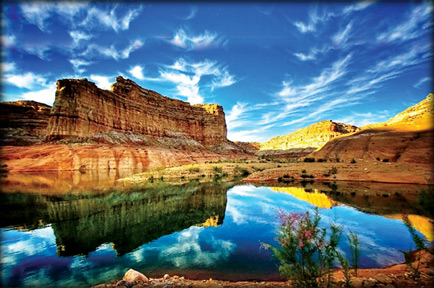 Grand Canyon - sublime spectacle of nature Grand Canyon - sublime spectacle of nature
By Pramod De Silva
I have always wanted to visit some of the most famous natural and
man-made structures in the US and the Grand Canyon has always been near
the top of that list. However, one of those eluded me until last month,
but I finally ticked it off my list.
If you do visit the Grand Canyon and have time to spare, take the
well-known Pink Jeep safari or a guided walking tour to appreciate its
true beauty at close quarters. If you have money to splash, why not take
a helicopter or plane ride over this unique landscape?
Why are we fascinated by the Grand Canyon? In fact, the Grand Canyon
is one of the most studied geologic landscapes in the world. Due to its
unique layer-by layer structure, it offers an excellent record of three
of the four eras of geological time, a rich and diverse fossil record, a
vast array of geologic features and rock types, and numerous caves
containing extensive and significant geological, palaeontological,
archaeological and biological resources. The canyon’s mile-high walls
display a largely undisturbed cross section of the Earth’s crust
extending back some two billion years. It is in other words, a living
fossil of the Earth itself. Nearly 40 identified rock layers form the
Grand Canyon’s walls. Because most layers are exposed all along the
canyon’s length, they afford scientists the opportunity for detailed
study of environmental changes from place to place (within a layer) in
the geologic past. Geologic evolution through time can be studied
through the changes between different layers.
Although the Canyon initially appears to be arid and lifeless, it is
actually teeming with life, big and small.
Diversity
|

A vista of Grand Canyon with Colarado River |
|

Another view of Grand Canyon |
The Park contains several major ecosystems. Its great biological
diversity can be attributed to the presence of five of the seven life
zones and three of the four desert types in North America. Over 1,500
plant, 355 bird, 89 mammalian, 47 reptile, nine amphibian, and 17 fish
species are found in the park. The large size, relatively unfragmented
habitat, and range of elevations and associated climates of Grand Canyon
National Park have made it a valuable wildlife preserve.
There are 1,737 known species of vascular plants, 167 species of
fungi, 64 species of moss and 195 species of lichen found in Grand
Canyon National Park. The Grand Canyon boasts a dozen endemic plants
(known to exist only within the park’s boundaries), while only 10
percent of the park’s flora is exotic. Sixty-three plants found in the
park have been given special status by the U.S. Fish and Wildlife
Service. Geological and biological studies in the park began with the
work of John Strong Newberry in 1858 and continue today.
In case you thought that the Park was a refuge only for plants and
animals, humans too have been living in the Park and the vicinity for
thousands of years. The oldest human artefacts found in Grand Canyon are
nearly 12,000 years old and date to the Paleo-Indian period. There has
been continuous use and occupation of the region since that time. Eleven
traditionally Associated Tribes and historic ethnic groups view the
Grand Canyon’s archaeological resources as preservation of their
heritage. The park has recorded more than 4,800 archaeological resources
with an intensive survey of just three percent of the park area.
Explore
Indeed, it will take a lifetime and more to explore the Grand Canyon
in full. Many waterfalls and other geographical features are hidden deep
inside the Canyon and are very difficult to reach. But stunning vistas
await those who dare to reach those inaccessible places.
However, things could change soon with a controversial development
project which calls for shops, homes, hotels and restaurants on site.
The developers also plan a gondola ride from those attractions to whisk
tourists to the canyon floor, where they would stroll on an elevated
riverside walkway to a restaurant at the juncture of the Colorado and
Little Colorado rivers. These plans have raised apprehension at the US
National park Service and among conservationists that the pristine
nature of the Grand Canyon could be lost if these developments go ahead.
These will certainly attract more tourists but at what cost is the
question raised by concerned groups. |

